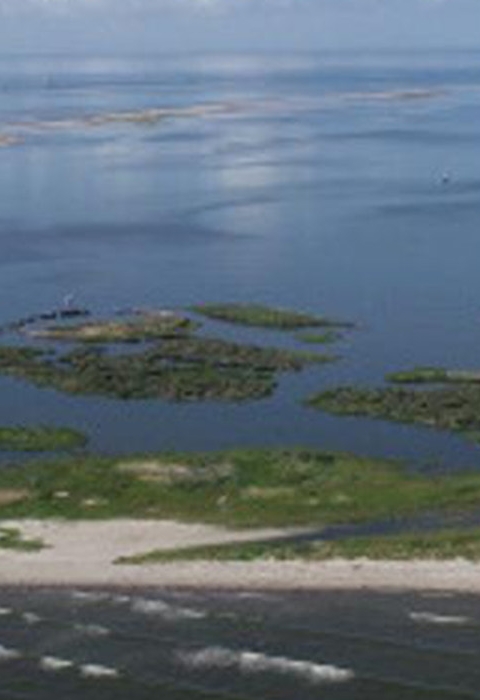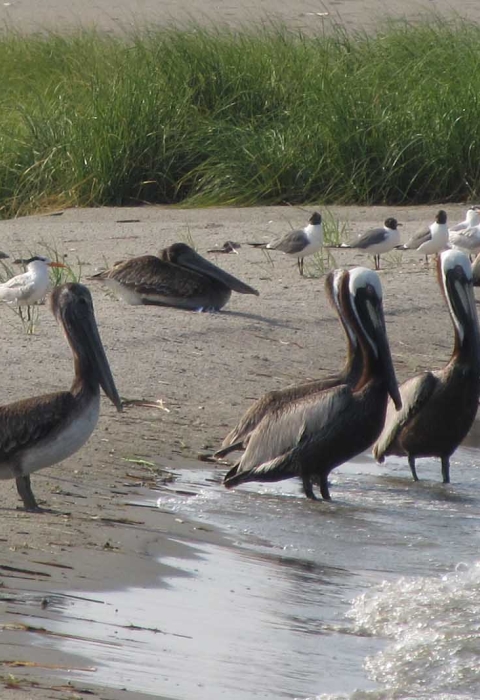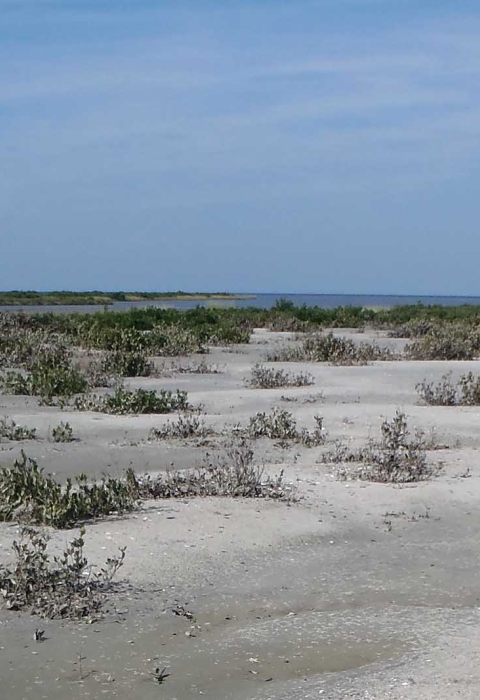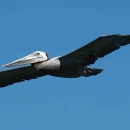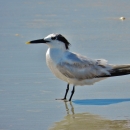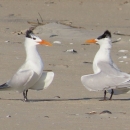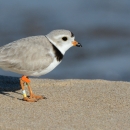Breton National Wildlife Refuge provides breeding habitat for colonies of wading birds and seabirds and wintering habitat for shorebirds and waterfowl. Twenty-three species of seabirds and shorebirds frequently use the refuge, and thirteen species nest on the islands. The most abundant nesters are brown pelicans, laughing gulls, and royal, Caspian, and sandwich terns. The refuge provides important wintering habitat for the federally threatened piping plover.
Visit Us
Travel to the refuge is a bit of a challenge due to its remoteness, but the rewards for a visitor are a unique and wild recreational nature experience. Most public use centers on fishing from the beaches and in the shallow water surrounding the islands. Whether you visit to fish or to observe and photograph wildlife, you are bound to have a memorable Southeast Louisiana nature adventure!
Location and Contact Information
About Us
Breton National Wildlife Refuge has some of the largest seabird colonies in the nation and provides breeding habitat for colonies of wading birds and seabirds and wintering habitat for shorebirds and waterfowl. Twenty-three species of seabirds and shorebirds frequently use the refuge, and thirteen species nest on the islands. The refuge provides important wintering habitat for the threatened piping plover.
The islands of Breton National Wildlife Refuge (except for North Breton Island) were designated as the Breton Wilderness — part of the National Wilderness System in 1975. As wilderness, the islands are managed to retain their relatively wild and untrammeled nature.
What We Do
Wildlife conservation is at the heart of what we do. It drives the work we do on lands and waters managed within the National Wildlife Refuge System — from the purposes for which a refuge is established, to the recreational activities offered, to the resource management tools used. Using conservation best practices, the Refuge System manages Service lands and waters to help ensure the survival of native wildlife species. Our staff use a variety of resource management techniques to maintain, recover or enhance plants and wildlife and the habitats they rely on.
Our Species
The refuge has some of the largest seabird colonies in the nation and has been identified as a Globally Important Bird Area by the American Bird Conservancy and The Nature Conservancy. Over 10,000 brown pelicans have been recorded nesting on the refuge. Waterfowl winter near the refuge islands and use adjacent shallows, marshes, and sounds for feeding and shelter. The Chandeleur Islands are one of only four Gulf of Mexico wintering grounds for the redhead duck, which feeds on seagrass beds.
Projects and Research
We conduct independent research and work with universities, various government organizations, and others to conduct research on the refuge. These studies improve our understanding of the ecology of the natural resources we are stewarding and evaluate the effectiveness of our management practices.
